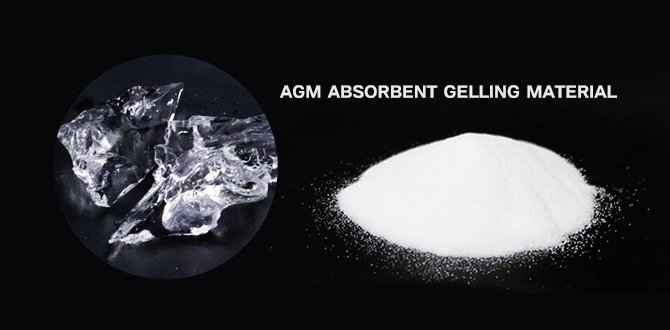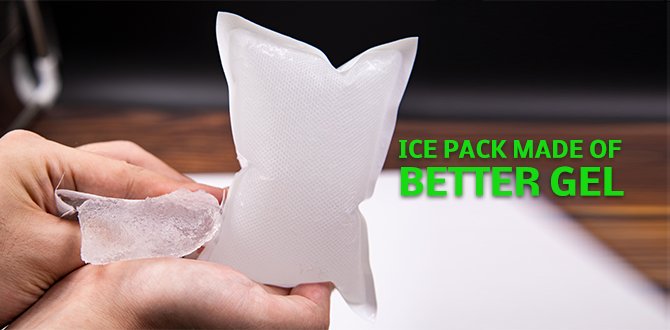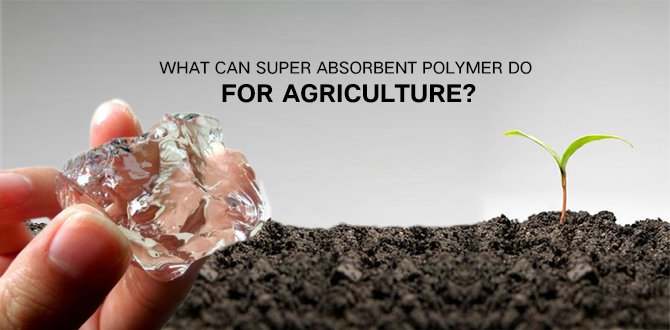Get Free Sample
Ice packs are a common solution for keeping food, beverages, and other items cool during transportation. These ice packs often contain super absorbent polymers (SAPs) that retain and release cold effectively. However, with growing environmental concerns, many people wonder if these SAPs and the best cold gel packs themselves can be recycled or reused. We will explore the recyclability and reusability of different types of non toxic gel packs and provide insights on how to dispose of them responsibly.

super absorption polymer are materials that can absorb and retain 300 to 500 times their own mass in liquid. In ice gel packs, SAPs absorb water and transform it into a gel-like substance, which helps maintain the cold temperature for extended periods. While SAPs are highly effective in their cooling role, their disposal and environmental impact are subjects of growing concern.
Composition: Gel ice packs typically contain a mixture of water, SAPs, and a thickening agent.
Reusability: These best gel ice pack are designed for multiple uses. As long as the outer plastic casing is intact, they can be refrozen and reused repeatedly.
Recycling: The SAPs inside gel pack ice are not easily recyclable. The plastic casing can be recycled if it is clean and empty, but it often ends up in the trash due to contamination.
Composition: Instant ice packs contain water and a chemical like ammonium nitrate or urea, which react when squeezed to produce an endothermic reaction.
Reusability: Instant ice packs are single-use products. Once the chemical reaction has occurred, they cannot be reused.
Recycling: The contents are generally not recyclable. The plastic exterior may be recyclable, but it often isn't accepted due to the chemical residue.
Composition: These ice sheets contain SAPs enclosed in a plastic or fabric casing.
Reusability: Reusable ice sheets are designed for repeated use. They can be refrozen multiple times, making them a more sustainable option compared to single-use packs.
Recycling: Similar to ice packs gel, the SAPs are not recyclable. The casing can be recycled if it is clean, but this is not always practical.
Composition: These ice pack long lasting contain dry ice (solid carbon dioxide) and do not use SAPs.
Reusability: Dry ice packs are typically not reused because dry ice sublimates (turns from solid to gas) and cannot be refrozen.
Recycling: There are no SAPs or plastic casings involved, so there are no recycling concerns. However, handling dry ice requires caution due to its extremely low temperature and potential for causing burns.

Ingredients: Gel ice packs usually contain a mixture of water absorbent material, biodegradable SAP and thickener.
Reusability: These biodegradable ice packs are designed for multiple uses. They can be re-frozen and reused as long as the outer plastic shell is intact.
Recycling: The biodegradable SAP inside the ice pack can be further utilized and can be used for green plants at home. The biodegradable SAP has the function of absorbing water and slowly releasing it, providing sufficient moisture for green plants and improving the soil structure. The plastic shell and non-woven outer packaging can be recycled if they are clean and empty, but they are usually thrown into the trash due to contamination.
Reusability: Reusable ice packs are generally better for the environment because they reduce waste compared to single-use options. Choosing gel ice packs or reusable ice sheets can minimize the environmental footprint.
Disposal and Drainable: Proper disposal of ice packs is crucial. Empty the contents (if safe) and recycle the casing if possible. For biodegradable gel ice packs, it is drainable and can be used for the horticulture usage.
Innovation: SOCO® Polymer is currently researching more environmentally friendly biodegradable ice pack materials. Biodegradable polymers are emerging as a promising solution to reduce plastic pollution and mitigate the environmental impact of traditional synthetic polymers.

Reduced Plastic Pollution:
Biodegradable polymers degrade much faster than traditional plastics, significantly reducing the amount of plastic waste that accumulates in the environment. This helps in decreasing pollution in landfills, rivers, and oceans.
Lower Carbon Footprint:
The production of biodegradable polymers often involves renewable resources like corn starch, sugarcane, and other plant materials. This reduces reliance on fossil fuels and lowers greenhouse gas emissions associated with plastic production.
Compostability:
Many biodegradable polymers are compostable, meaning they can be broken down in industrial composting facilities into nutrient-rich compost that can enhance soil quality and support plant growth.
Non-toxic:
Biodegradable polymers are generally less toxic than conventional polymers because they do not release harmful chemicals during degradation. This makes them safer for the environment and human health.
While the super absorbents polymers in ice packs provide an effective cooling solution, their recyclability remains limited. Gel ice packs and reusable ice sheets offer better environmental options due to their reusability, while instant ice packs and dry ice packs present greater disposal challenges. As consumers, we can make a more sustainable choice by choosing biodegradable gel ice packs. Future innovations will provide more environmentally friendly solutions that balance the need for effective cooling with environmental responsibility.
Regarding whether the liquids in instant ice packs are toxic, generally speaking, the liquids in these ice packs are non-toxic under normal use. Biodegradable ice packs are eco-friendly alternatives to traditional gel or plastic ice packs commonly used for cooling and preserving food, medical supplies, and other perishable items. Biodegradable ice packs are eco-friendly alternatives to traditional gel or plastic ice packs commonly used for cooling and preserving food, medical supplies, and other perishable items.
Ice packs are typically composed of a gel or liquid mixture enclosed within a flexible, leak-proof container.
To dispose of gel ice packs, the key steps involve draining any remaining liquid, determining if the pack can be recycled based on local guidelines, and safely discarding any non-recyclable materials in the trash.
Ice packs usually consist of two parts: a gel-like substance and a shell. The gel-like substance is the core of the ice pack, mainly made of super polymers material (such as sodium polyacrylate) mixed with water, which has good water retention and low-temperature stability, and is able to maintain a solid state after freezing, slowly releasing cold.
We have “Ask The Expert” online service 24/7. If you have any questions please contact us.